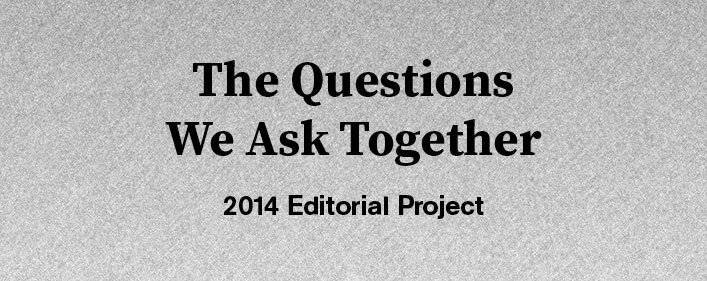What are the risks/possibilities of approaching the public with a predetermined mind?
Ellen Harvey, Mathematical Star, 2013. Permanent installation at Marcy Plaza in Brooklyn, New York.
I tend to think of predetermination being related to thought and action rather than emotion, so rather than figure out the link between god and sorrow in 500 words or less, I propose that in the context of this question, a “predetermined mind” is one that disallows the possibility for new information or changing circumstances to affect one’s approach to a situation. Working for city government to commission permanent artworks for the Percent for Art program––which seeks input from a panel of professionals and community stakeholders when selecting art projects––I find this idea problematic. What would happen if I went into every Percent for Art selection panel with a “predetermined mind,” knowing what the commissioned work should look like before the panel began to review the shortlist of artists, before the artists made their proposals, and before panelists made their comments?
This intuitive approach or sense of predetermination might be closer to the role of curator, whose singular vision is critical in presenting a particular work of art or a collection of artworks. My role in New York City government is to facilitate a selection process, not to preempt it. The structure of the Percent for Art commissioning process should be consistent and fair––but not predetermined.
It is also worth considering how “public” is defined in this context. Government serves “the public,” but that public represents an ever-changing group of stakeholders. Before beginning each commission, I try to understand who––what public––will use the site where the artwork will be placed. Each structure, whether it’s a park, a plaza, a streetscape, a library, a school, a courthouse, a wastewater treatment facility, a correctional facility, or a theater, requires a different kind of artistic approach with specific sensitivities. Entering this process with a predetermined mind would pose a threat to successfully commissioning art for the public.
One recent Percent project worth considering is Ellen Harvey’s Mathematical Star, commissioned for Marcy Plaza in the Bedford-Stuyvesant neighborhood of Brooklyn. A circular mosaic set in the plaza follows the form of a mathematical star quilt. Harvey’s interest in consulting with the community was persuasive to the panelists who wanted the artwork to be meaningful for neighborhood residents. After soliciting suggestions from Brooklyn Community Board 3, Harvey created what she calls a secret history of the neighborhood, alluding to sites that residents identified for their social, cultural, spiritual, and educational importance. The abstract pattern of the quilt is comprised of elements that are recognizable to residents: details of the stained glass window at a local church, a magnolia tree in a nearby park, and the pressed tin ceiling of one of the historic houses located at the Weeksville Heritage Center.
In government, the mandate to provide consistent, effective, and responsible services could be characterized as predetermined, but Harvey’s project illustrates what we risk losing if we approach the public without allowing for a dialogue on each artwork and its place in the community.
Special thanks to Reina Shibata and Ryan Max.
About the contributor: Sara Reisman is the director of New York City’s Percent for Art program which commissions permanent artworks for newly constructed and renovated city-owned spaces, indoors and out. Recently commissioned artists include Pablo Helguera, Rico Gatson, Julianne Swartz, and Karyn Olivier, among others. Recent curatorial projects include Still Acts, a group exhibition organized with Ian Daniel at La MaMa Galleria about the political potential of stillness in performance and choreography, and solo projects by Claudia Joskowicz (Sympathy for the Devil,2012) and Christopher K. Ho (Privileged White People, 2013) at Forever & Today, Inc. Reisman was the 2011 critic-in-residence at Art Omi, an international visual artist residency in upstate New York, and a 2013 Marica Vilcek Curatorial Fellow, organized by the Foundation for a Civil Society. nyc.gov/percent/percentforartnyc.tumblr.
